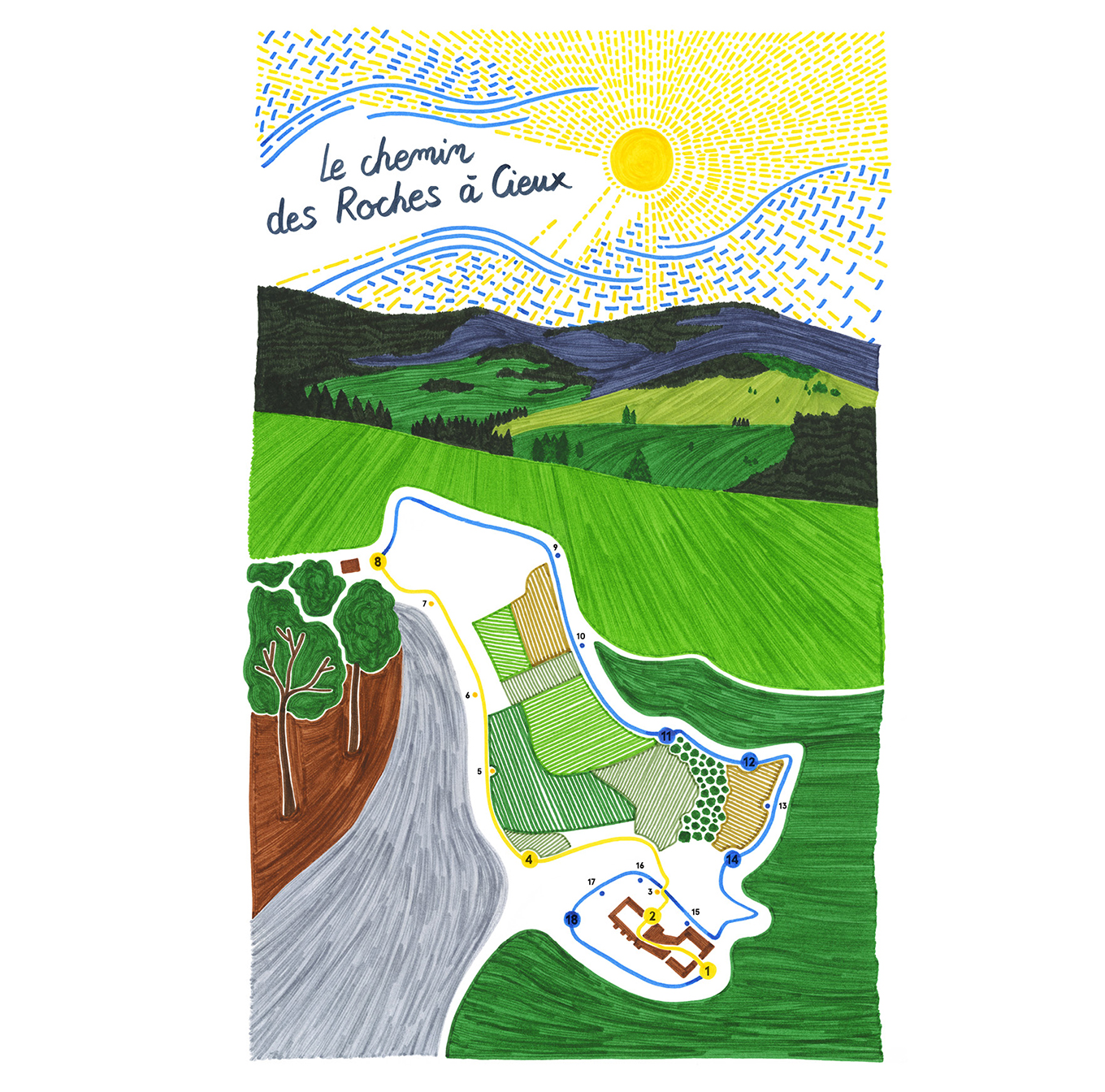
To live at the Chartreuse de Sainte-Croix en Jarez for the duration of a residency is to encounter the history of the Carthusian monks who lived here until the French Revolution, as well as the farmers, craftsmen, restaurateurs, elected officials, mediators, municipal workers, etc. who live in this village of 480 inhabitants. Through an exploration of the notion of "spaciement" - a weekly walk practiced by the Carthusian monks - the challenge of this residency was to imagine a journey punctuated by sensory and poetic installations, in dialogue with the past and present of Sainte-Croix en Jarez. A one-hour walk around the Chartreuse, the walk highlights the views of the former monastery and dialogues with natural flows: wind, light, water and its inhabitants, the plants and animals that populate its landscape.

Stones of the Heavens trail was conceived from interviews, visits (“Braids and Laces Museum”, “La Mourine Museum”), long walks, and readings. I was looking for an element that would create a link between subjects as different as the way of life of the Carthusian monks, their relationship with nature and their use of space, the highly agricultural activity of the village today, the industrial history of the region, in particular the manufacture of braids and laces, but also the flora and fauna of the natural areas of Sainte-Croix...
Gradually, the work became more structured, using local stones and ropes. Stone, the building material of La Chartreuse, of the low walls guiding visitors along the route, and the support of legends from the Roches de Marlin... is the element that anchors us to the ground, accompanies visitors along the route and becomes a key to understanding the site.

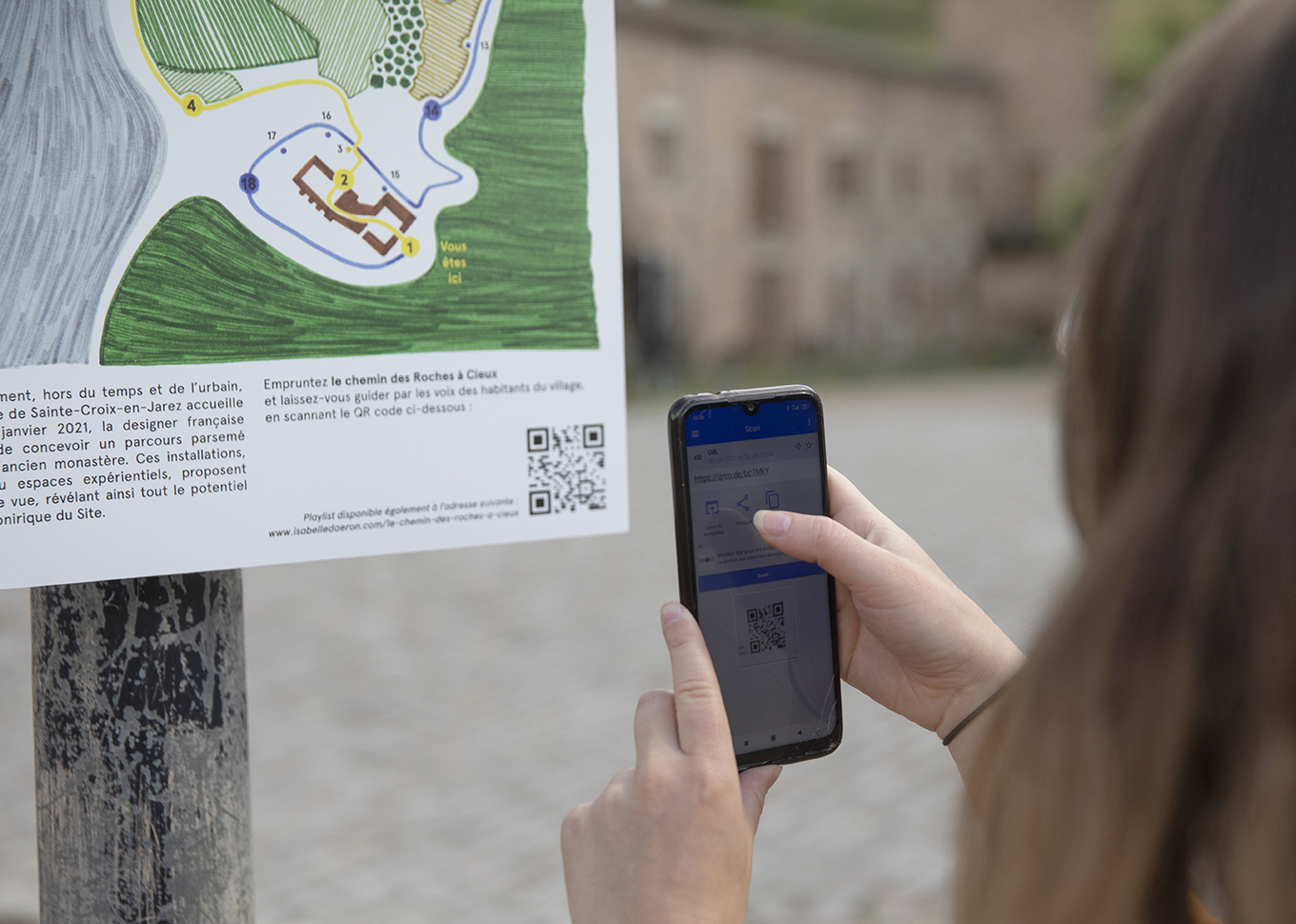
A curtain of leaves marks the threshold between the Chartreuse and the outside world. It highlights the sunlight, like an invitation to step outside. The installation evokes Komorebi, a Japanese notion describing the moment when light is filtered through the leaves of a tree.

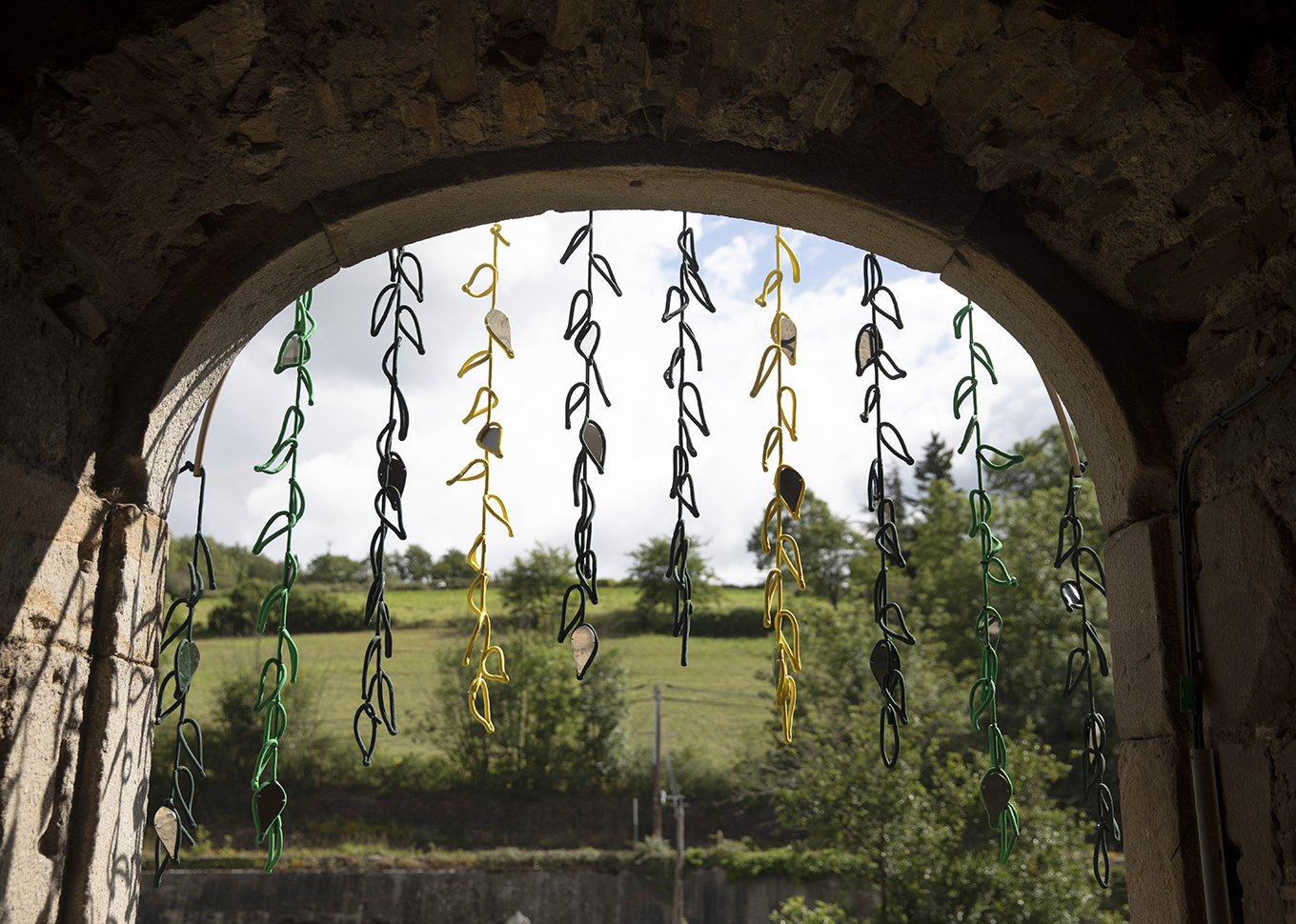
Between each of the main installations, stone and rope interventions guide the visitor.
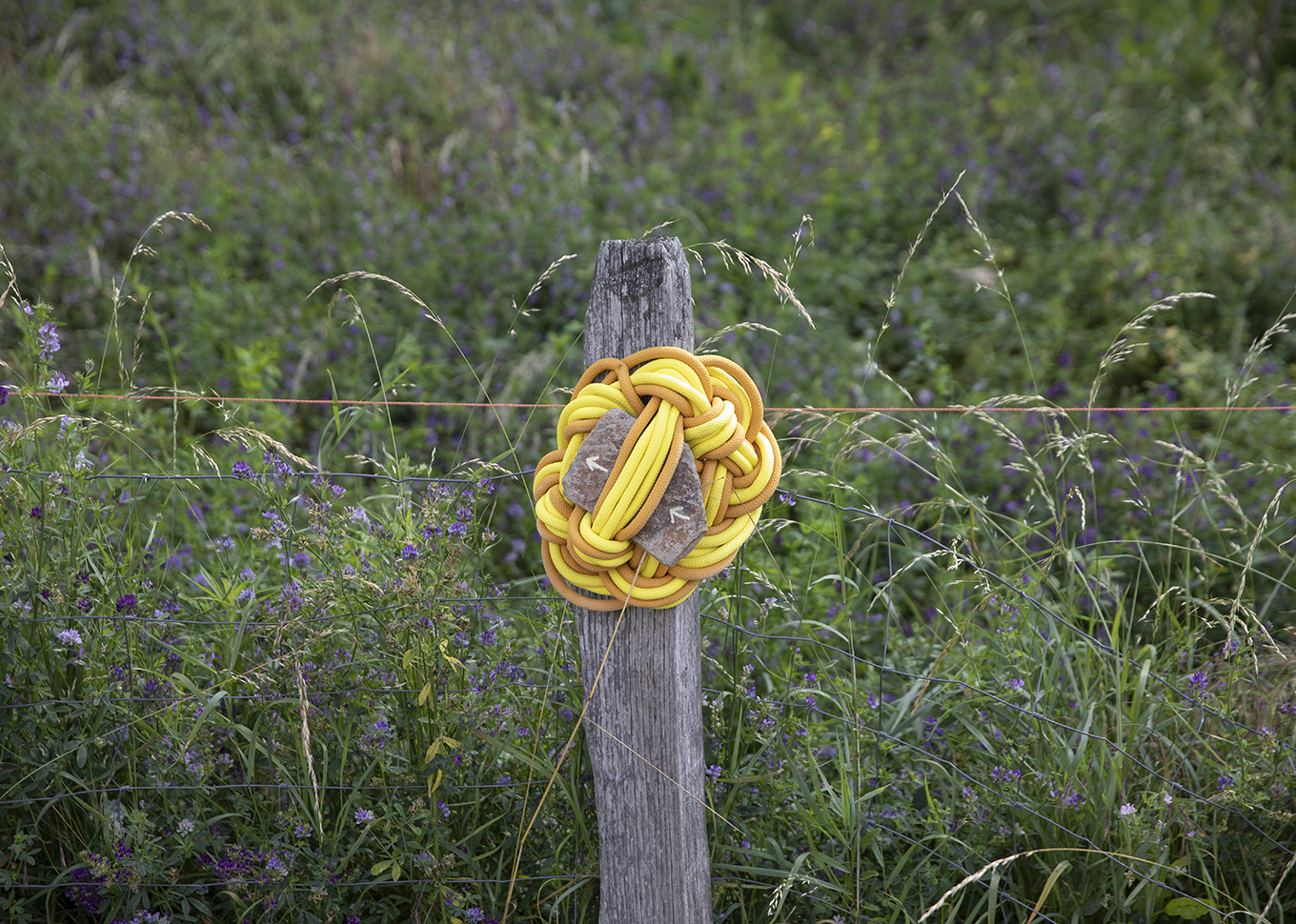
A woven window invites us to contemplate the Chartreuse. Its presence on the Stones of the Heavens trail is a reminder that it was often absent from the monks' cells.

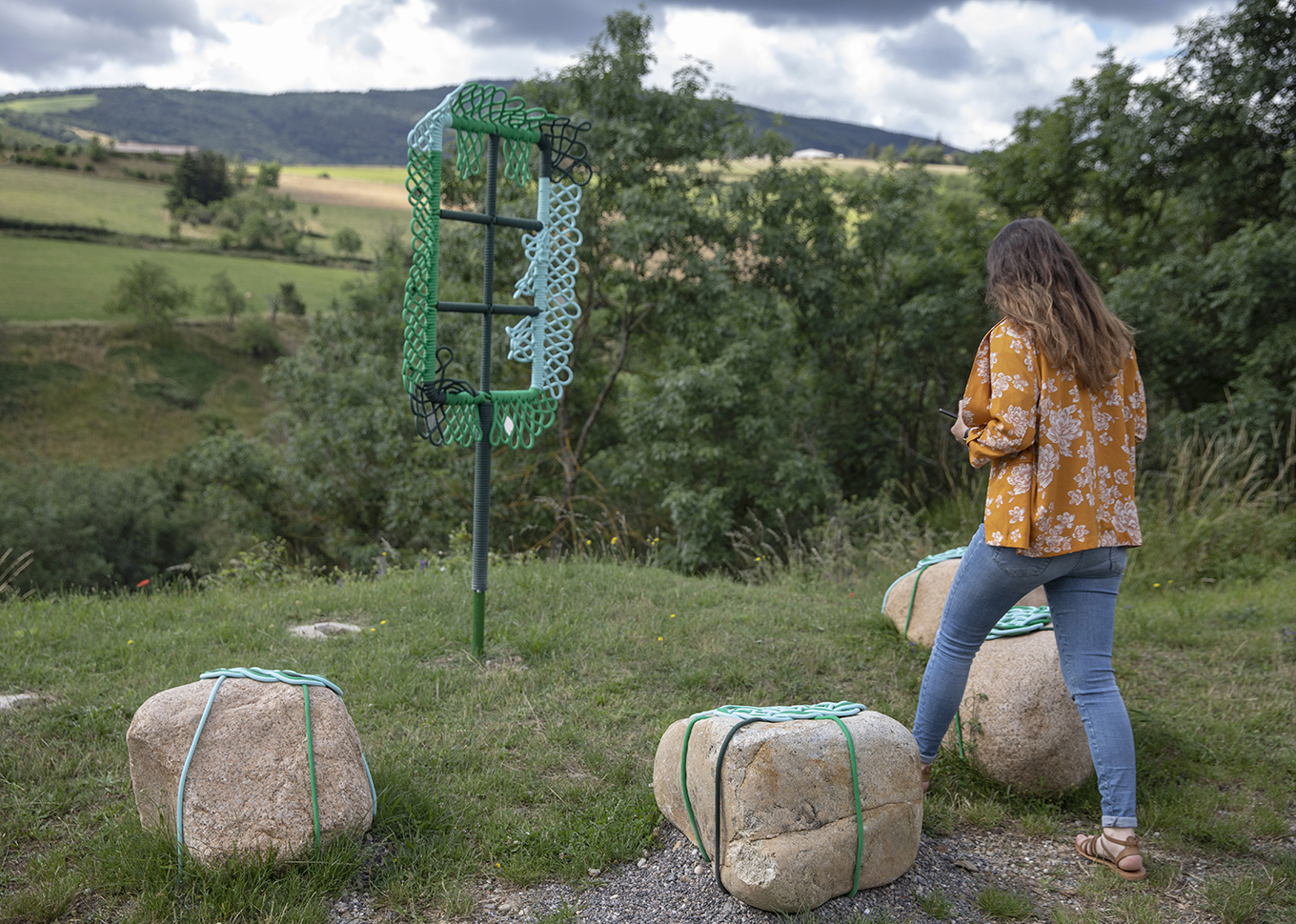
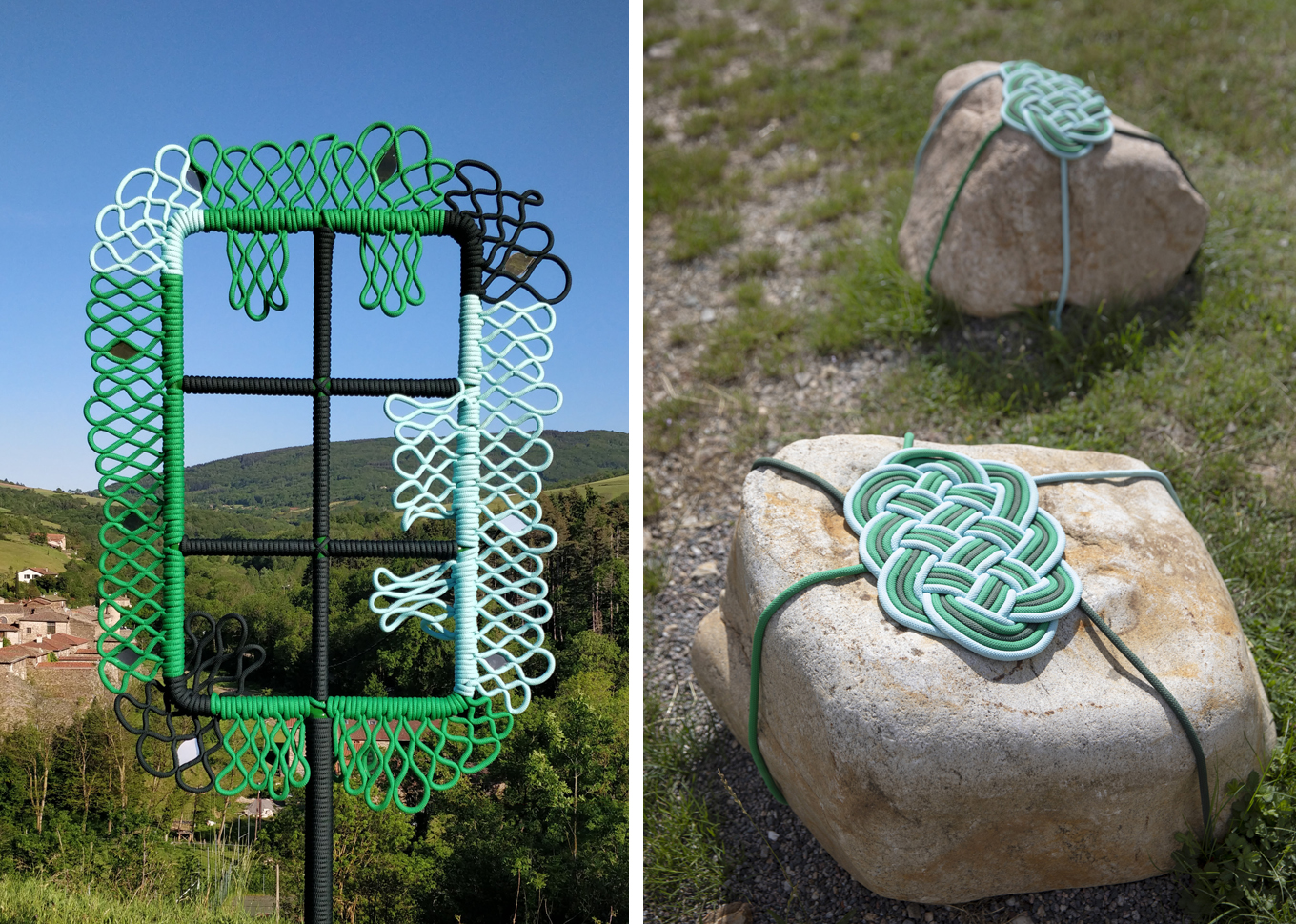

Not far away, the enchanted Marlin Rocks. Here, the singing stones. In front of the Jurieux chapel, a lithophone (a musical instrument made of stone) invites visitors to make the stones sing.

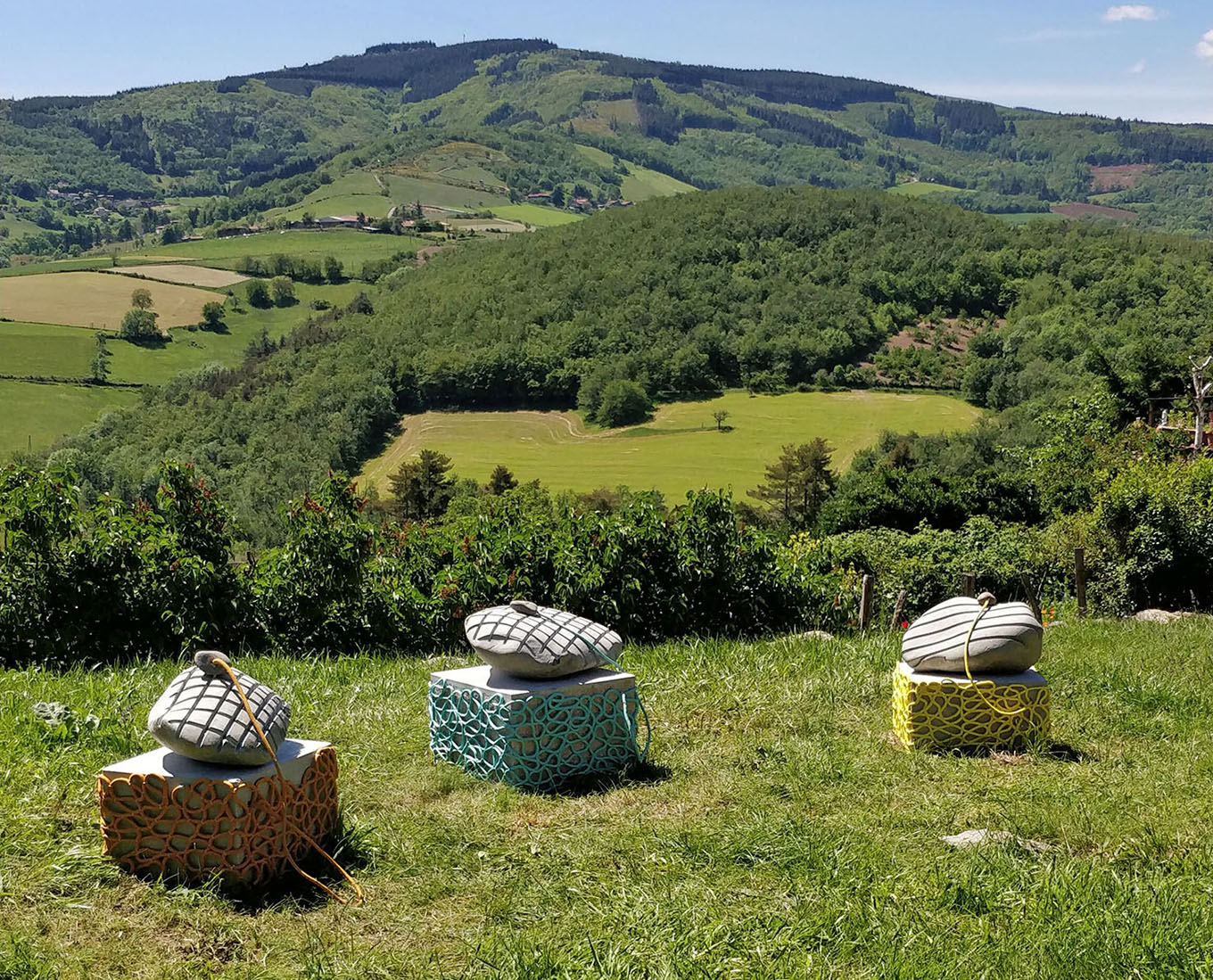
The gullied ground evokes the passage of a watercourse. The braided rope reveals the ghostly presence of the millstream that once fed the Chartreux mill.

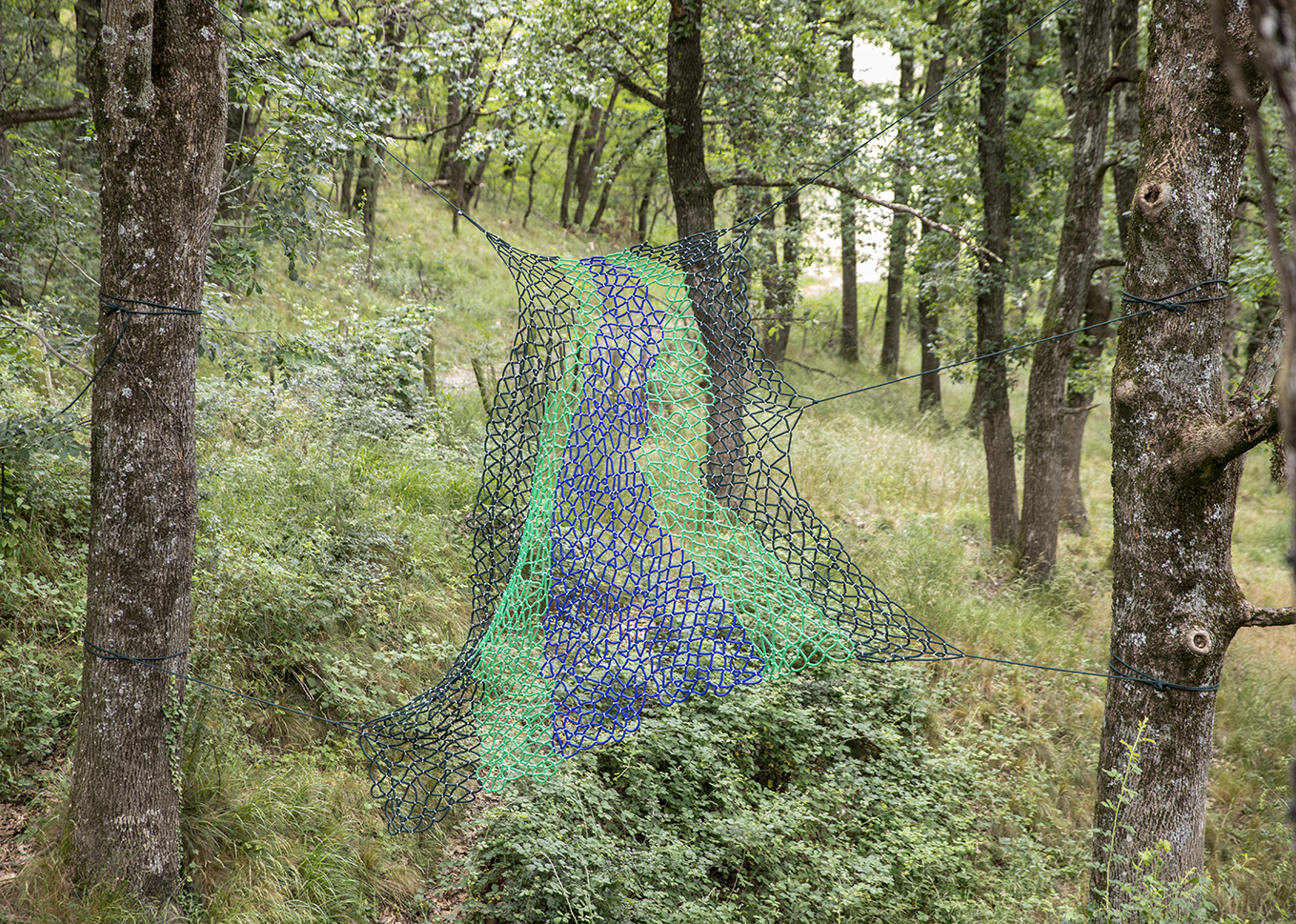
A salamander, a barbastelle, a black woodpecker, a red-legged frog, a squirrel and a fox, depicted in colored rope, take their place in the Rochassieux woods, a way of evoking the animals that inhabit the site.
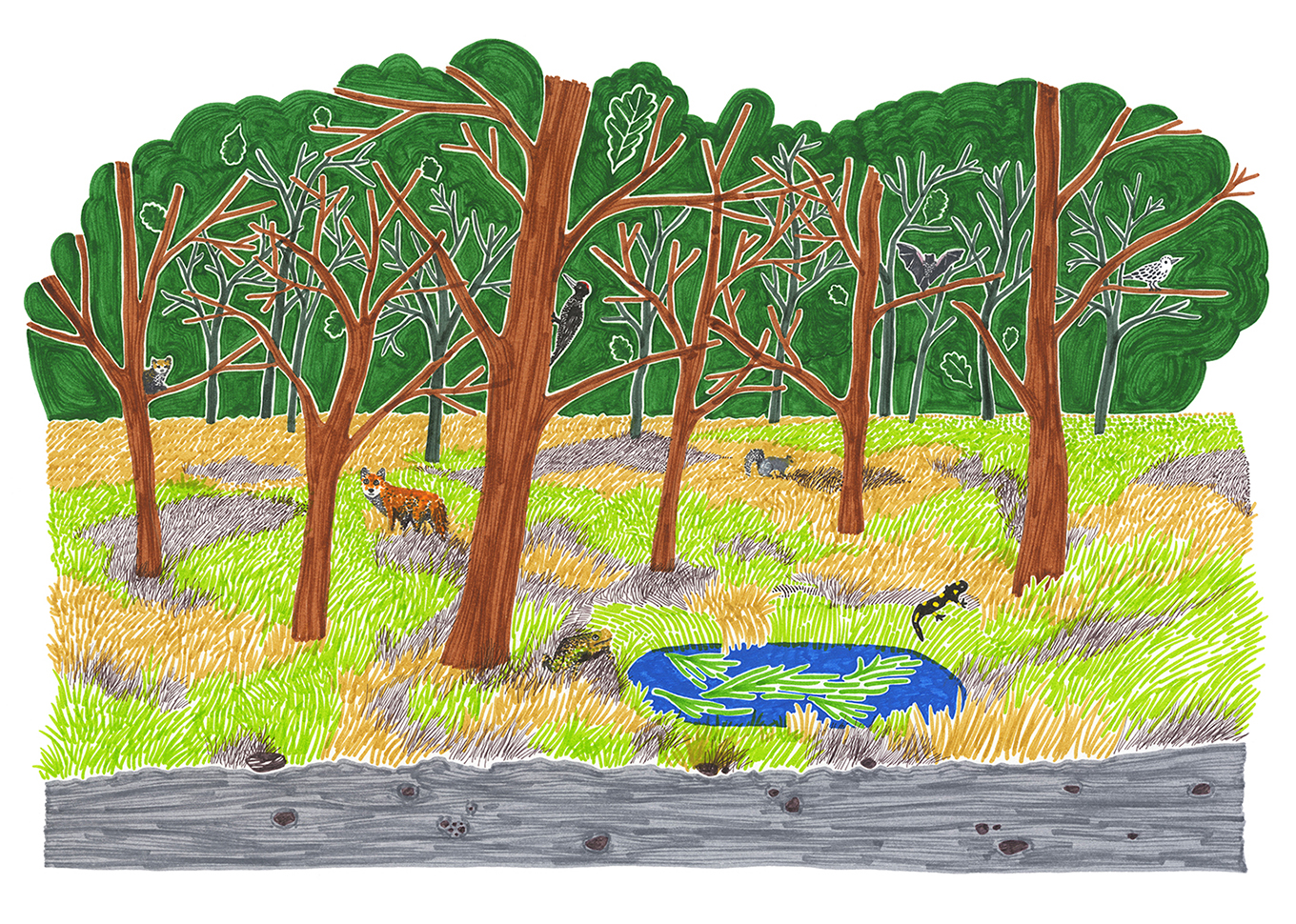
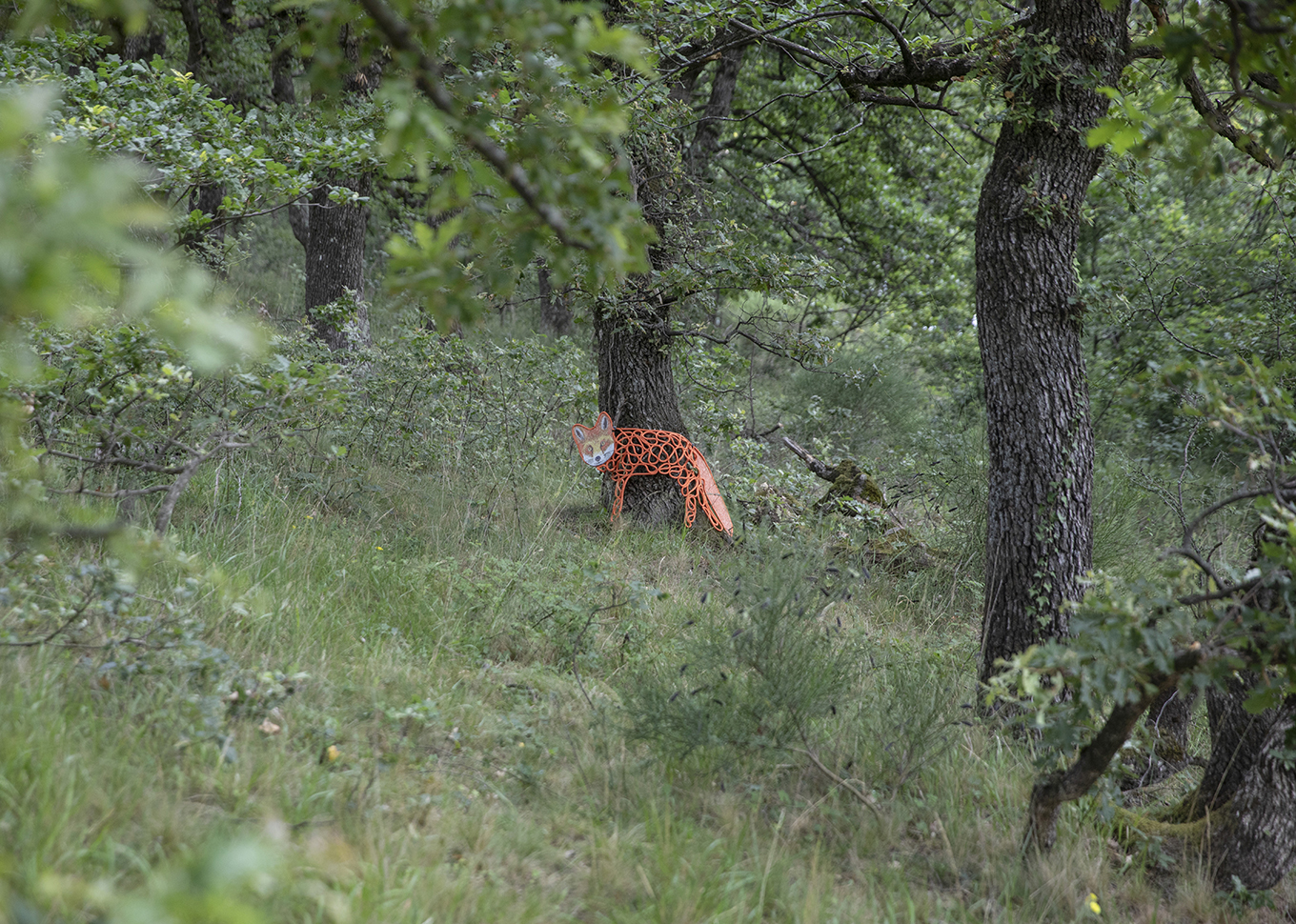

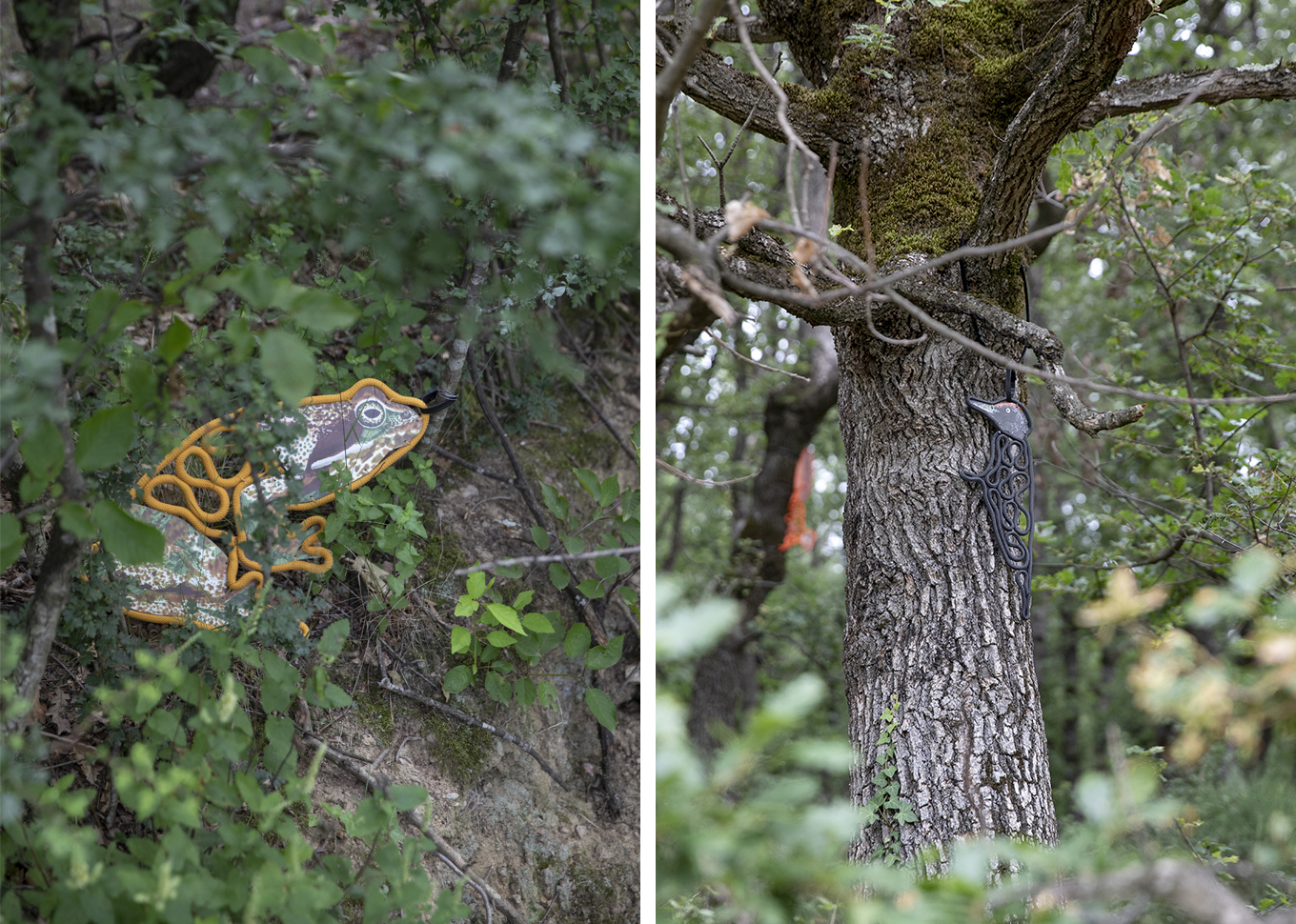
Seen from here, the woven window is a reminder of the road we've travelled. Symbolizing a connection with the outside environment, it invites us to change our point of view, to make a turnaround or even a revolution.

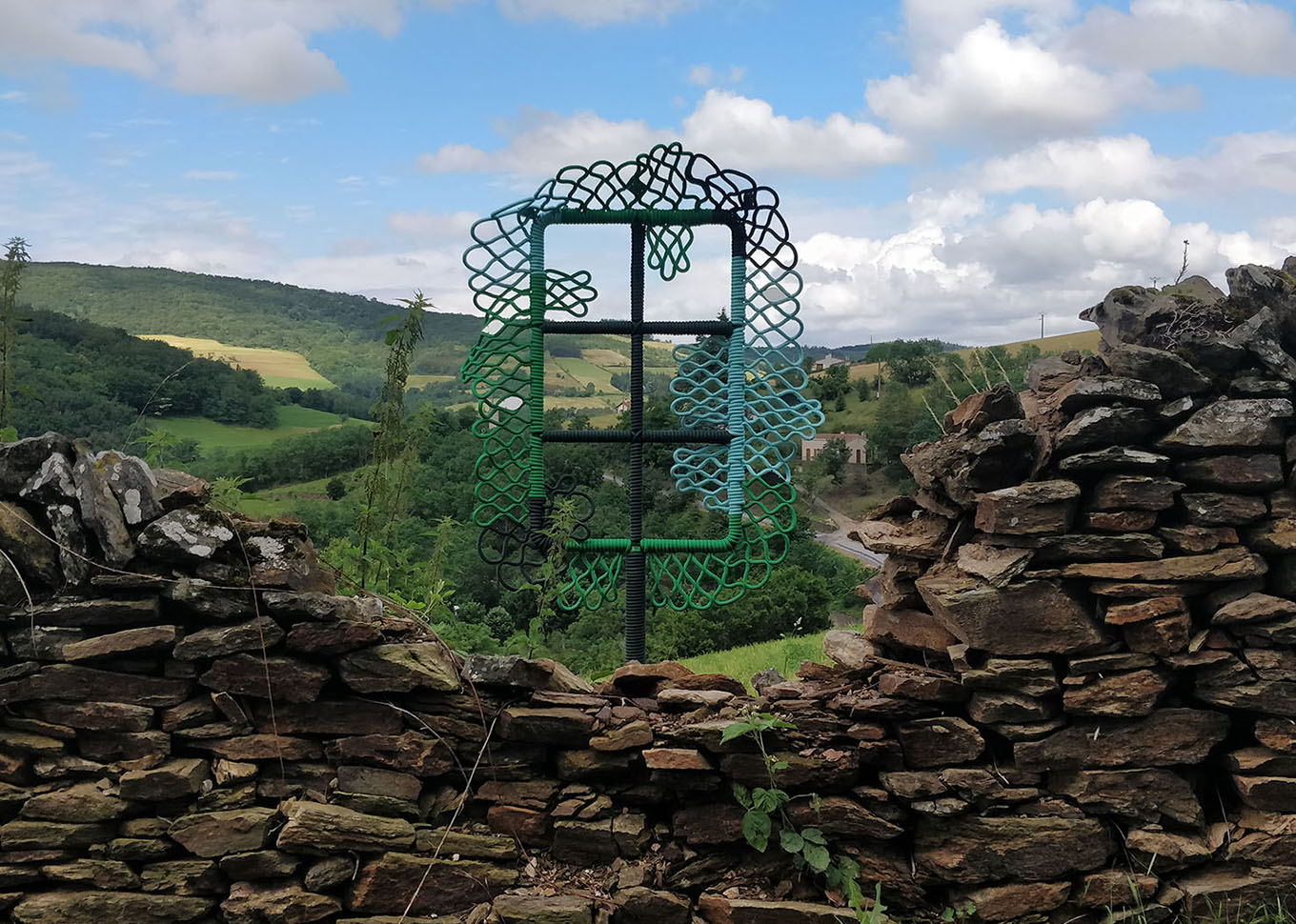
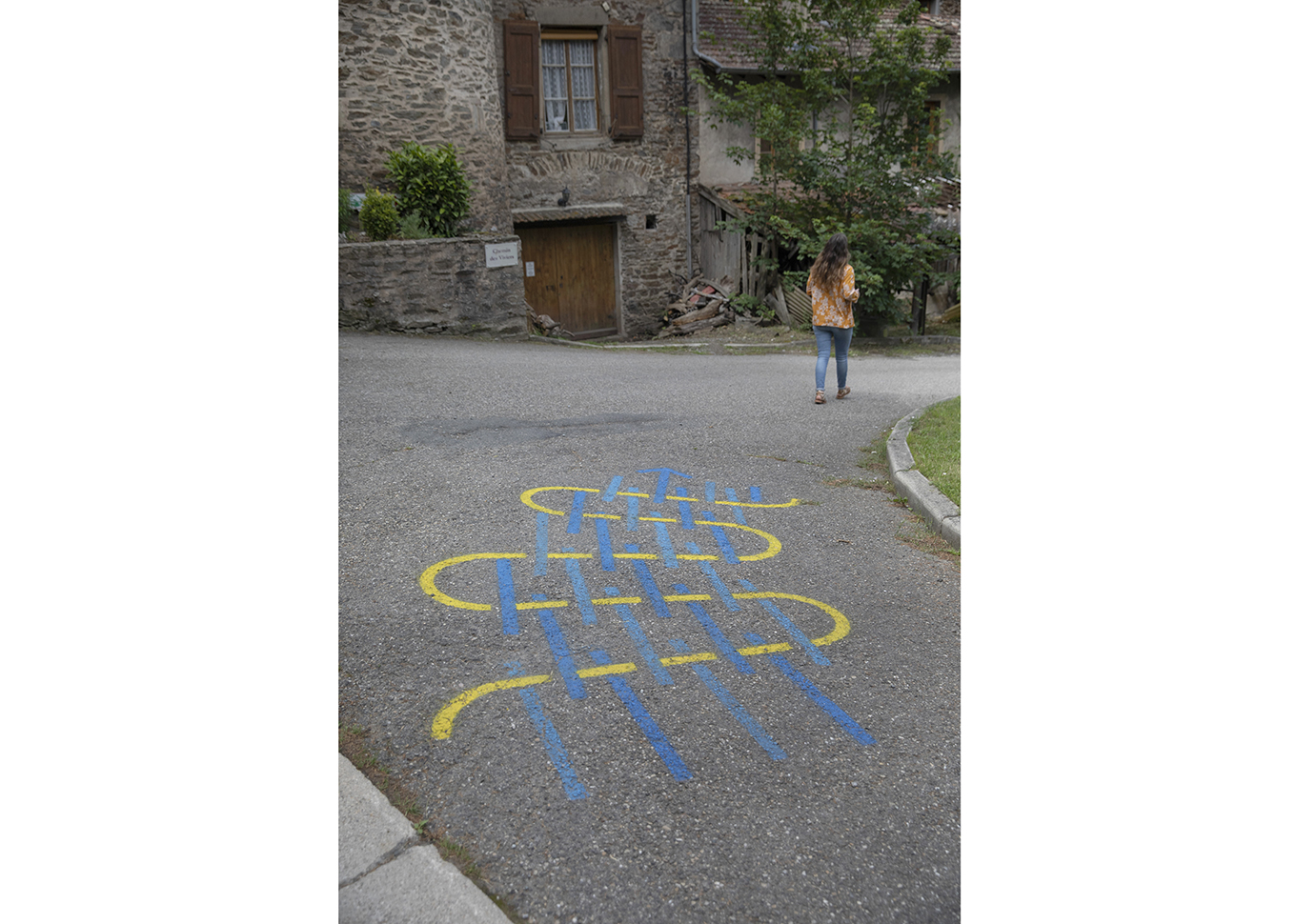

Stones of the Heavens trail ends with a communion with the Sun. An analemmatic sundial, woven from stones and ropes, invites us to connect with the light. It also recalls the use of sundials, often portable, in Carthusian times.

Each installation is associated with an audio track:
Project designed for the village of Sainte-Croix en Jarez, with the support of Saint-Etienne Métropole, the Chartreuse site team (Morgiane Laib, Emilie Sabot, Jeanne Marcon, Véronique Mercier, Stéphanie Lepagneul), the Cité du design and the Parc Naturel Régional du Pilat.
With thanks to: The Braid and Laces Museum (Luce Chazalon) and La Mourine, Blacksmith Museum in Saint-Martin-la Plaine (Robert Girard, Josyane Chêne); Craftsmen Lucien Pacallet and Didier Jouanjus, stone masons in La Terrasse-sur-Dorlay and Savigneux, Gauthier et Fils, braid and rope makers in Vertolaye and Alex Cobas, metal craftsman in Sorbiers; The Studio Idaë team: Pauline Avrillon, Floriane Roué, Lita Gomez Carrera, Ethen Ben Abda (trainee), Mathilde Vaillant (trainee), Florian Meca (trainee).
With thanks to: The Braid and Laces Museum (Luce Chazalon) and La Mourine, Blacksmith Museum in Saint-Martin-la Plaine (Robert Girard, Josyane Chêne); Craftsmen Lucien Pacallet and Didier Jouanjus, stone masons in La Terrasse-sur-Dorlay and Savigneux, Gauthier et Fils, braid and rope makers in Vertolaye and Alex Cobas, metal craftsman in Sorbiers; The Studio Idaë team: Pauline Avrillon, Floriane Roué, Lita Gomez Carrera, Ethen Ben Abda (trainee), Mathilde Vaillant (trainee), Florian Meca (trainee).